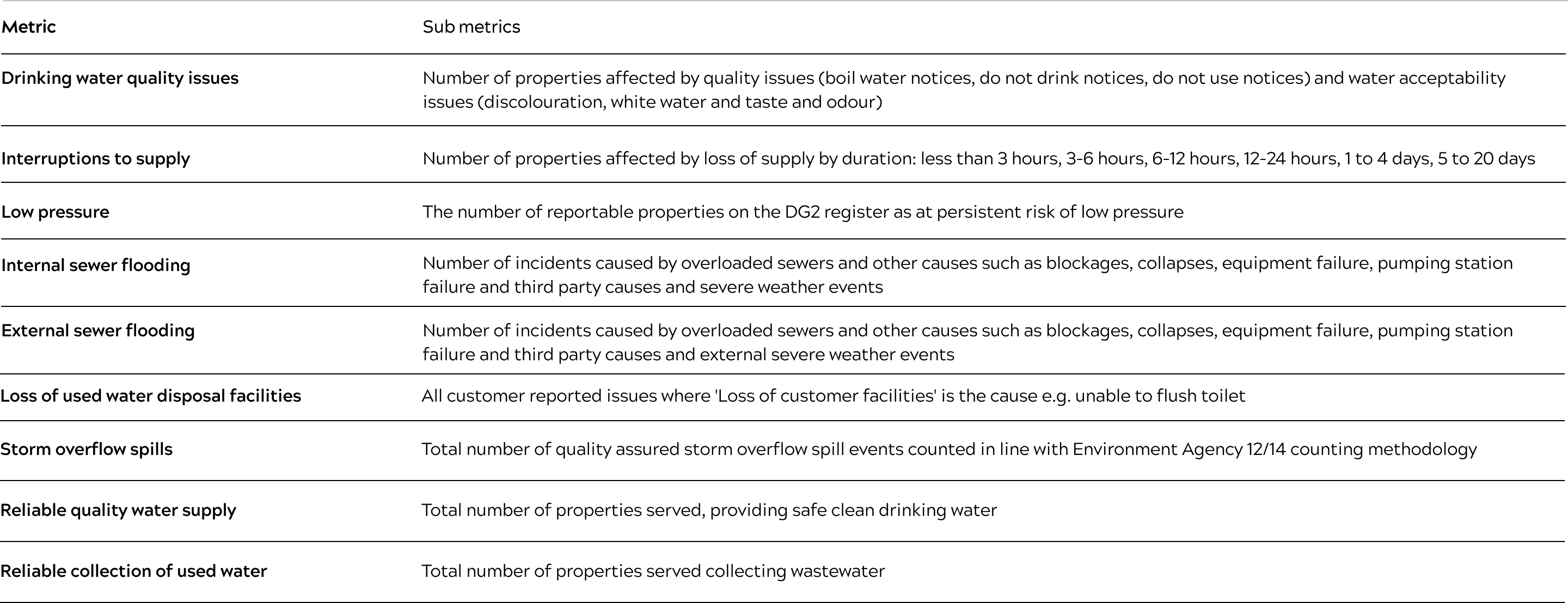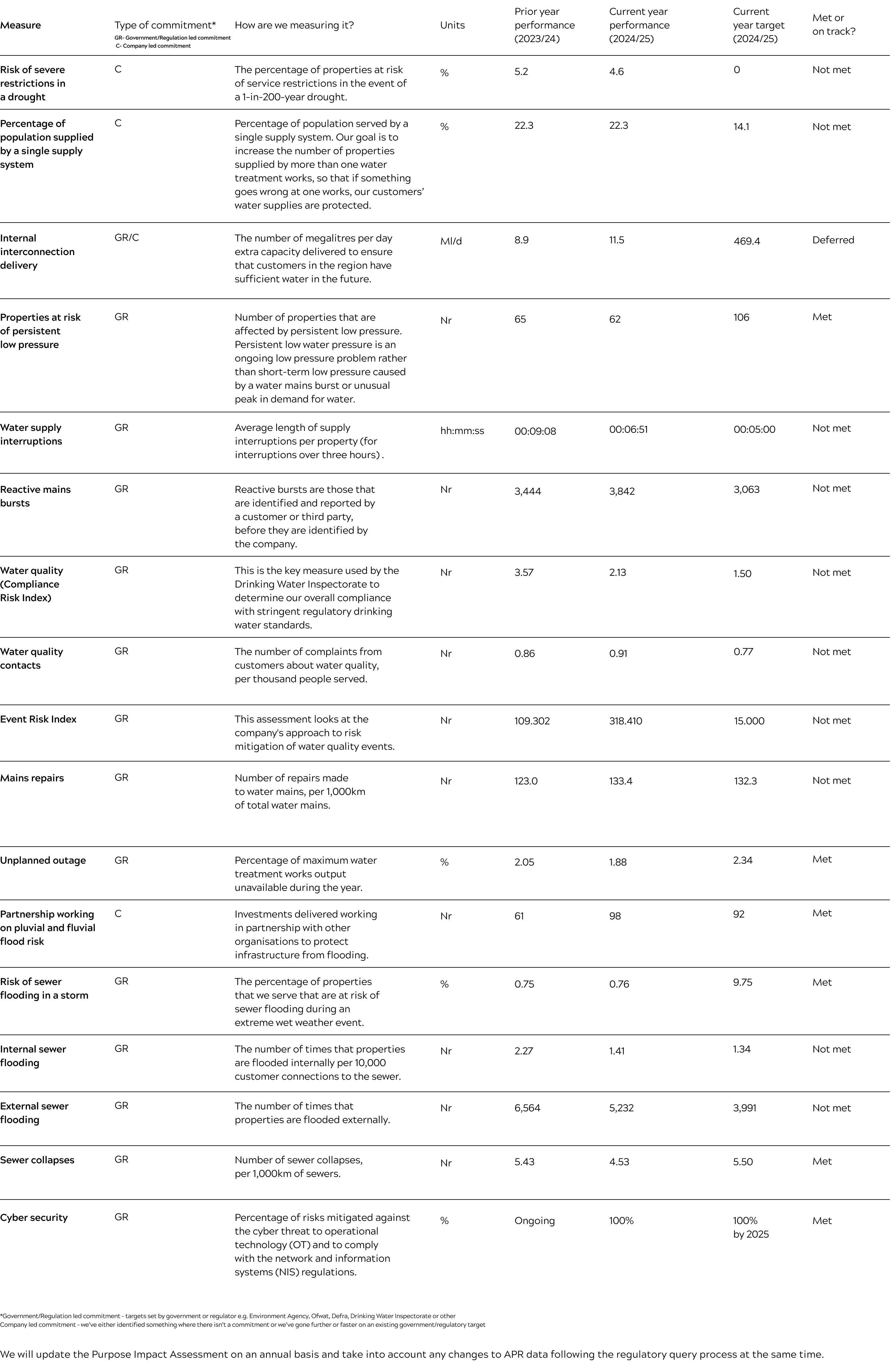{{selectedAlertBand.alertDescription}}
{{selectedAlertBand.incident.heading}}
Message last updated - Tuesday 16th December 2025
{{selectedAlertBand.incident.heading}}
Message last updated - Tuesday 16th December 2025
Message last updated - Tuesday 16th December 2025
{{selectedAlertBand.alertLinkText}} {{selectedAlertBand.alertLinkText}}
For further updates subscribe

Climate change is no longer a future threat, the impact is being felt globally, across sectors and ecosystems, today. Water is at the forefront. Across the world, we are witnessing more flooding, increased risk of drought and rising sea levels. And, as populations grow, there is a higher demand for water, which requires more transportation and energy-intensive pumping. Competing demands for water can impact biodiversity, alongside extreme weather events, which can impact water quality. Sustainable water management is key to building resilience in the face of the climate and nature crisis.
Some of our key commitments to 2030 include:
Find out more about our ambitions to 2030 and 2050 in our AMP8 Business Plan proposals.
Our impact
The measures in this section cover the impact of us doing the basics right. Providing reliable collection of wastewater and delivering a reliable quality water supply, our biggest contributions to the region - as well as the negative impacts of when we don’t get it right.
We also face pressures, challenges and opportunities in terms of climate change. We are focused on investing in climate change adaption and operational resilience to ensure no deterioration in the services we provide to customers.
Some of these measures are made up of a suite of sub metrics and full details can be found in our methodology.

Quality water supply
Every day we supply around 1.2 billion litres of drinking water, to millions of customers, via 140 water treatment works and over 37,000 kilometres of water mains.
Our customer research repeatedly tells us that their main priority is the delivery of safe, reliable drinking water and as the assessment demonstrates, this is our biggest positive impact on social prosperity for the region.
Since privatisation, we have invested significantly in drinking water quality, reducing the risk of pesticides, pathogens, discoloured water and taste and odour issues, meaning that drinking water quality in the UK now ranks among the best in the world.
The impact of drinking water quality issues and low pressure has remained small. Interruptions to supply remain a significant negative impact in this area. This year we stayed close to the Ofwat target throughout the year until January 2025 when a freeze thaw event caused above average mains bursts and subsequent supply interruptions. Further information can be found in our Long term planning for quality of drinking water supplies and Annual Integrated Report.
Collection of used water
Every single day, we clean and treat one billion litres of used water across over 1,000 water recycling works. With more intense rainfall, shifting weather patterns, a growing population and less green space, our drainage system is having to process more than ever before.
In 2024/25 we saw an improvement on sewer flooding compared to 2023/24 when severe wet weather conditions had impacted our operations. For example between October 2023 and January 2024, parts of the UK received more than 150 per cent of the 1991-2020 long term average rainfall for the four month period. High intensity rainfall creates high groundwater levels over time, which is challenging for us to remove from the environment and leads to large volumes of excess rainwater being carried into rivers, ditches and storage. To put this into context, one home roof generates the same volume of water as 100 homes would use in a day. In a small town of 5,000 homes, this is like instantly connecting 500,000 homes to the sewer system. If other parts of the drainage system are not working as they should, this number can multiply rapidly, resulting in widespread and prolonged flooding. We are looking at the drainage system in its entirety and are developing new approaches to prevent flooding impacts. Read more in our Drainage wastewater management plan . Our long-term vision is that our customers never experience internal or external sewer flooding.
Storm overflow spills are triggered to prevent flooding and operate under permitted conditions by the Environment Agency. Without overflows, this excess storm water would back up through toilets, drains and manholes. Because of the job that they do, the majority of what comes out of them is rainwater. Our long-term ambition is to surrender all storm overflows, rendering them inactive by 2050. Our storm overflow impact has increased although it is difficult to make a year-one year comparison as 2024 was the first year where we had 100% monitoring of Event Duration Monitors (EDMs) on the storm overflows across our region. The trends also reflect the fact 2022 was exceptionally dry with 2023 and 2024 being exceptionally wet. Find out more in our River Health Report pages 44-47 in our Annual Integrated Report and EDM real time map.
Climate change adaption
Geographically, our region is the driest in the UK, although instances of extreme rainfall and rising sea levels are increasing the risk of flooding across our large coastal areas. We have always taken a long-term view to building resilience. The importance of investing in climate change adaptation – which spans across our operations - will enable us to secure a safe and sustainable service. Along with protecting the environment, and realise the opportunities associated with transitioning to net zero and adapting for climate change. Our Climate Change Adaptation report submitted to the Department for the Environment, Food and Rural Affairs (Defra) in December 2024 provides more detail on how we are adapting to risks.
Operational resilience
Operational resilience means that our infrastructure and skills can prevent, manage and recover from disruptions in our service. We have used our resilience framework to guide our strategy for delivering a reliable and affordable water supply for our customers. Specific resilience challenges are covered by investments in our Water Resources Management Plan (WRMP), Drainage and Wastewater Management Plan (DWMP) and commitments outlined in the Water Industry National Environment Programme (WINEP).
Our Long Term Delivery Strategy includes a range of programmes to protect our assets. Including: impacts of climate change, flood defences, securing water supply and reducing risk of failing infrastructure and investing in technology to increase efficiency and resilience of our operations and network.
Our performance and commitments
Our commitments and current performance around our ambition to be resilient to the risk of drought and flood are shown in the table below. Further details can be found on pages 30-36 in our Annual Integrated report and in our Annual Performance Report.
